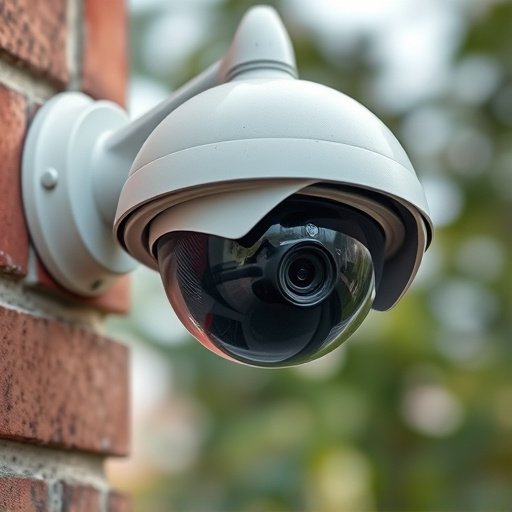Understanding the psychology behind fake security camera placement is key to an effective security strategy. By strategically positioning decoy cameras in high-risk areas like entry points, windows, and valuable assets, property owners can deter crime without costly hardware installations. The best placement for these cameras aims to trick criminals into believing they're being watched, balancing deterrence with legality while respecting privacy expectations. Optimal positions include highly visible yet realistic locations, aligned with actual camera placements, enhanced by motion sensors and flashing lights. Regular changes in camera positioning add an extra layer of deterrent for various intruders.
Uncover the power of deception with our guide on the best placement for fake security cameras. We explore the psychology behind their impact, delving into legal considerations and advanced techniques to maximize deterrence while preserving privacy. Learn how strategic placement can transform your security strategy, from understanding human behavior to selecting the ideal locations for these decoy devices.
- Understanding the Psychology Behind Fake Security Camera Placement
- Legal Considerations for Deploying Decoy Cameras
- Best Practices for Visually Effective Placement
- Targeted Areas: Where to Position Your Impostor Cameras
- Advanced Techniques for Maximizing Deterrence and Privacy
Understanding the Psychology Behind Fake Security Camera Placement
Understanding the psychology behind fake security camera placement is key to an effective strategy. Criminals are often deterred by the mere presence of surveillance equipment, even if it’s not authentic. The best placement for fake security cameras should mimic real security systems, positioning them in areas where potential intruders would expect to see them. This includes entry points, windows, and high-value assets within a property.
By strategically placing these decoys, business owners and homeowners can create the illusion of enhanced security without actually installing costly hardware. It’s about tricking the mind—making would-be criminals believe they’re being watched, even if it’s just a well-positioned fake camera that could be easily dislodged or turned off. This mental barrier often discourages criminal activity, making fake security cameras an affordable and effective deterrent.
Legal Considerations for Deploying Decoy Cameras
When deploying decoy security cameras, it’s crucial to understand the legal implications and best practices involved in their placement. Different jurisdictions have varying laws regarding surveillance technology, particularly when it comes to privacy rights and consent. One of the primary considerations is ensuring that the use of fake cameras does not infringe upon any individual’s reasonable expectation of privacy. This means strategically placing them in areas where public observation would be expected, such as exterior walls or common areas accessible to the public.
The best placement for fake security cameras should balance deterrence and legality. While these decoys can act as a powerful deterrent to potential criminals, their positioning must respect privacy boundaries. Property owners are advised to consult legal experts to understand the specific regulations in their area and ensure that the deployment of fake cameras adheres to all necessary guidelines, thereby avoiding potential legal repercussions.
Best Practices for Visually Effective Placement
When considering the best placement for fake security cameras, visual effectiveness should be the top priority. Positioning them in highly visible areas acts as a powerful deterrent to potential intruders. Strategically placing these decoys near windows, entrances, and exits creates an illusion of constant surveillance, making would-be thieves think twice before attempting any illegal activity.
To maximize their impact, fake security cameras should mimic real ones as closely as possible. Aligned with the actual camera positioning in a property, they can be mounted on walls or ceilings, mimicking the field of view and angle of genuine surveillance equipment. Additionally, ensuring these decoys are lifelike in appearance, complete with flashing lights and motion sensors, will enhance their credibility and further deter potential criminals.
Targeted Areas: Where to Position Your Impostor Cameras
The best placement for fake security cameras is in targeted areas that potential intruders are likely to focus on. These could include main entry points like doors and windows, as well as valuable asset locations within your property. Strategically positioning impostor cameras in these high-risk zones sends a clear message that your space is under surveillance.
Consider common hiding spots where burglars might attempt to disable real security systems. Place fake cameras above these areas, or near lights and mirrors that reflect onto them, making it harder for would-be thieves to avoid detection. Regularly changing the positions of your dummy cameras can also add an extra layer of realism and deter more cautious intruders.
Advanced Techniques for Maximizing Deterrence and Privacy
Maximizing security while maintaining privacy is a delicate balance, especially with fake security camera placement. To achieve optimal deterrence, consider positioning these decoys in areas that offer clear visibility but remain concealed from direct view. For instance, mounting them on ceilings or behind reflective surfaces can create an illusion of all-encompassing surveillance without compromising discretion. Advanced techniques involve using motion-activated lights and sensors to further enhance the strategy.
The best placement for fake security cameras should also account for potential angles of approach. Strategically placing them near entry points, such as doors and windows, sends a powerful message to would-be intruders. Additionally, aligning these cameras with landscaping elements like trees or bushes can provide natural cover while ensuring optimal line-of-sight. This multi-faceted approach not only intimidates potential criminals but also gives genuine security systems an extra layer of support.
When strategically deploying fake security cameras, understanding human behavior, legal boundaries, and best practices is key. By considering these factors, you can create an effective deterrent while maintaining privacy. Targeted placement in high-risk areas sends a clear message to potential criminals. Advanced techniques, such as combining real and decoy cameras, further enhance security without compromising confidentiality. Ultimately, the best placement for fake security cameras lies in balancing visibility and privacy, making your property safer and more secure.
